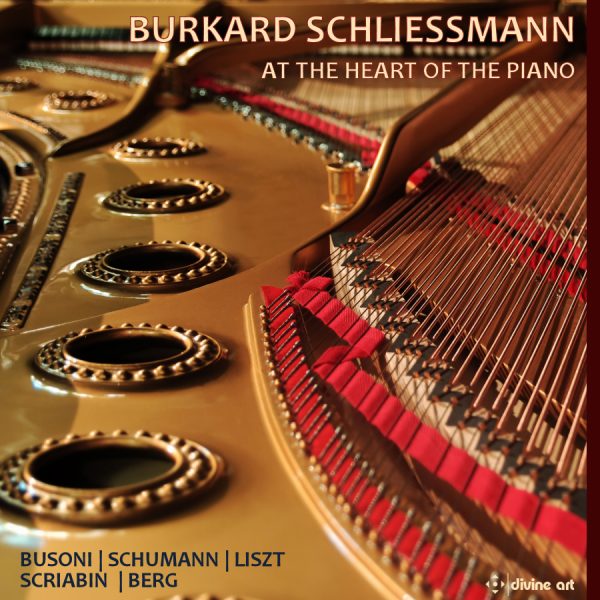International Piano
All of the pieces on this impressive triple album aim at some sort of transcendence. The Bach/Busoni Chaconne is at once a tribute to Bach and a pinnacle of the Romantic piano virtuoso repertoire. Schliessmann’s account is noble yet kaleidoscopic. As Busoni pulls Bach into his orbit, so the piano seems to expand into a protoorgan. Schliessmann’s intuitive grasp of the work’s structure allows him to mould it naturally while retaining the underlying form. Its outsized ending leaves the listener feeling replete.
The limpid, descending phrase that opens Schumann’s Symphonic Studies comes as balm to the soul after such high drama. Schliessmann’s commanding performance is beautifully variegated. He is right to follow Brahms’ approach by including Schumann’s posthumously published variations. Grandeur meets tenderness in a performance that suggests Schliessmann’s complete resonance with the spirit of Schumann. The coupling of mutually dedicated works on the second disc works well. Schumann’s Op 17 Fantasie and Liszt’s Sonata in B minor are like two sides of the same Romantic coin. Schumann’s writing is utterly individual and Schliessmann’s performance is gloriously unbuttoned. The Liszt also receives a fine performance, unrushed in the slower sections, playful and diabolic when the tempo picks up. Schliessmann’s technique is rock solid, his command reminding me of Daniil Trifonov in the music’s stormier sections. He masterfully navigates the expansive lyricism that lies at the heart of Liszt’s masterwork.
The crowning glory of the set, though, is Schliessmann’s Scriabin. His performance of the composer’s Third Sonata (F-sharp minor Op 23) is magnificently powerful, while the six excerpts from the Op 11 set of Preludes are exquisitely moulded. The two Danses Op 73 and five Op 74 Preludes resonate in perfect harmony with Scriabin’s elusive late style. Schliessmann conjures a glittering yet liminal space, supported not only by his fine Steinway but also by the Divine Art recording and piano technician Georges Ammann, who Schliessmann describes as ‘the best in the world, and the most prominent piano technician from Steinway’ (Ammann only collaborates with five pianists, of whom Schliessmann is one).
The Berg Sonata arises from the fire of Scriabin’s Op 74/5 like a phoenix soaring in a post-Tristan world. Schliessmann’s considered, polished reading, impeccable in its realisation of complex textures, is a model of its kind. This, coupled with a prevailing crepuscular tendresse gives Schliessmann’s reading warmth and academic integrity, bringing his thought-provoking album to a perfect close.
@divineartrecordingsgroup
A First Inversion Company
Registered Office:
176-178 Pontefract Road, Cudworth, Barnsley S72 8BE
+44 1226 596703
Fort Worth, TX 76110
+1.682.233.4978












